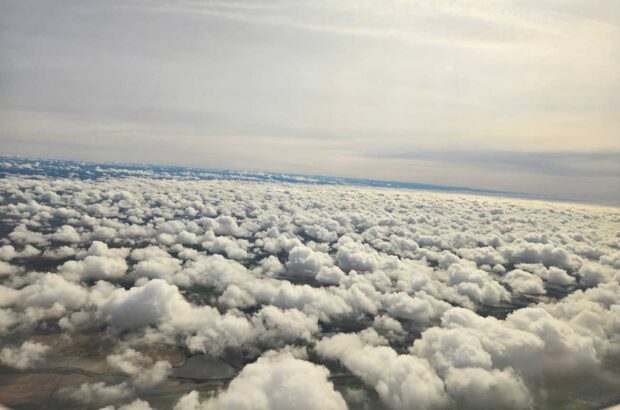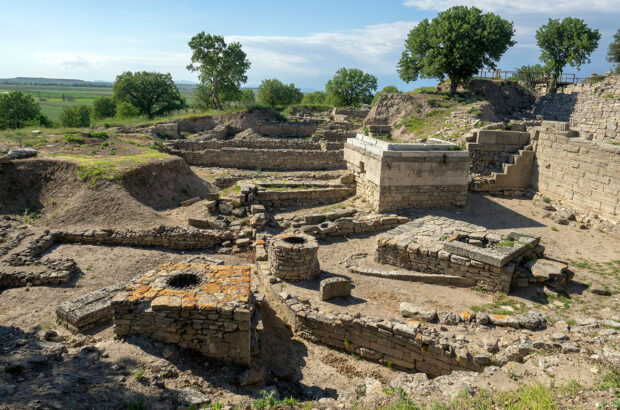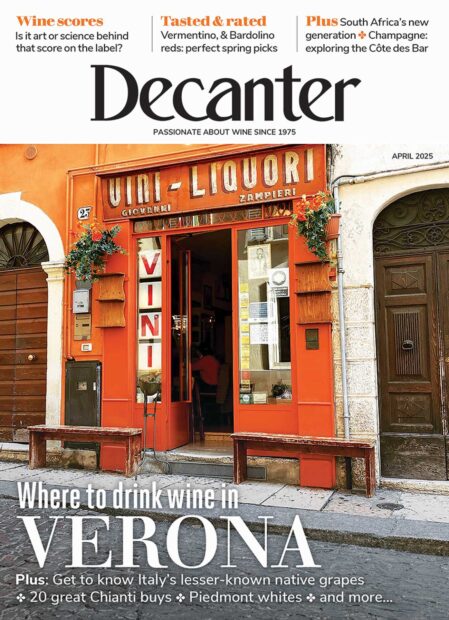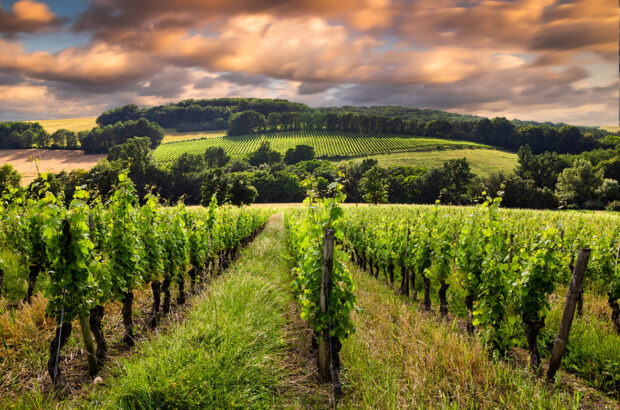Having revolutionised Italian wine, the ego is understandable. But what of Angelo Gaja’s claim that Italy’s future is white? By tim atkin MW
At an age when most men are contemplating the prospect of a free bus pass, Angelo Gaja is as youthful and energetic as ever. His hair may be grey now, but Italy’s most famous winemaker still moves at a pace that is closer to a jog than a stroll. Spend three hours with him and he barely pauses to catch his breath. The flair, the passion, the downright brio of the fellow are remarkable.
The 2009 harvest has barely finished, but Gaja is already buzzing about the wines fermenting in his stylish, modern Barbaresco cellar. ‘2009 is like 1990,’ he tells me, grabbing my arm for emphasis, ‘good everywhere. There was a bit of rain in the south, but in northern and central Italy, it’s excellent.’
How things have changed. When Gaja joined the family winery in 1961, it was hard to make good Barbaresco. ‘In five vintages out of 10, Nebbiolo didn’t reach 12% alcohol,’ he recalls. ‘We couldn’t chaptalise [add sugar] and even if we reduced yields, it was hard. It often rained in September, so climate change has been a boon. Since 1995, grapes have reached full maturity almost every year.’ Except in 2002, when Gaja bottled no Barbaresco or Barolo, every other vintage has been ‘beautiful’, though 2003 was not without problems.
‘The worry now is too much sun will make alcohol levels too high’. The Gaja winery was celebrating its 150th anniversary when I visited, complete with an exhibit showing the four generations, including Gaja’s three children, two of whom are already working in the business. Often described as the man who dragged Piedmont into the modern world, Gaja pauses in front of a black and white portrait of his father, Giovanni. ‘My success is due largely to him,’ he says. ‘An artisan is someone who learns from within his family. I went to school with my father in the winery and vineyard.’
For someone with such a big ego – there are times when you could imagine him running a small African country – Gaja is surprisingly modest. ‘A leader is someone who can take some decisions earlier than others. I did that by introducing barriques, longer corks, increasing vine density, green harvests and better tannin management.
But my father was an innovator too.’ Giovanni put the name Gaja in big red letters on his labels in 1937, demonstrating a flair for marketing that he passed on to his son. He also started to buy some of the best vineyards in Barbaresco after 1964, including the three crus that have made the winery’s modern reputation: Sorì San Lorenzo, Sorì Tildin and Costa Russi.
More importantly, says Gaja, his father had a deep knowledge and love of Nebbiolo, and the ambition to make the best in the world. ‘He was ignorant in many ways about other grapes, and he never travelled, but he was the most complete artisan in the area and a great taster. He realised that lower yields were the way to top quality, halving the number of buds per vine, and he wasn’t afraid to declassify wines and sell them off in bulk when they were bad.’
But relations between the two were not always harmonious. Giovanni, who attended the office every day until he was 87, famously opposed his son’s use of new barriques and his decision to plant Chardonnay, Sauvignon Blanc and, most famously, Cabernet Sauvignon (the name of that resulting wine, Darmagi, is Piedmontese for ‘what a pity’). ‘To him,’ smiles Gaja, ‘wine only had one colour – red – and it had to be from local grapes.’
For all his desire to praise his father’s achievements, Gaja is no mean operator himself. The Decanter Man of the Year in 1998 says he ‘has lived through the big changes in Italian wines over the past 30 years’ but omits to mention he has been a catalyst for many of them. ‘As recently as the early 1980s,’ he says, ‘sweet Lambrusco was the flagship for Italy in the US. Our image in other countries was mostly cheep and cheerful, too.’
The artisan
The modern revolution, says Gaja, began in two regions: Piedmont and Tuscany. The first was, and largely remains, an area of family-owned smallholdings farmed by what Gaja likes to call ‘artisans’; the latter has a more aristocratic tradition, with larger estates, more outsiders and noble families such as the Antinoris and Frescobaldis. Burgundy and Bordeaux are good parallels.
‘Piedmont is a magical area,’ says Gaja. ‘The impact the vineyards have on you is physical, and the wines have a personality and a character that is unique. Tannins and acidity are the specificity of this region, even if they are hard to understand. You need to have the will to discover Nebbiolo; unlike Cabernet, which takes centre stage.’
That may be so, but Barbaresco and Barolo are much easier to sell today than they were in 1961, when Gaja started to work with his father. Back then, there were only 128 producers in the two regions and only five sold wines made from their own grapes. Today there are 500 producers, 350 of which are growers too. It’s no coincidence that the local wines are more approachable in youth and middle age, partly thanks to Gaja’s innovations.
‘The temperature of fermentations is much more controlled now. They used to get up to 36°C and the wines often had residual sugar in them after two to three months. Leaving the wines on skins for so long led to massive extraction, volatile acidity and stuck fermentations.’
Gaja makes 18 different wines from vineyards in Piedmont (100ha), Montalcino (27ha) and Bolgheri (110ha) – 350,000 bottles in total. The move south into first Barolo (where he makes Sperss and Conteisa) then Montalcino (Sugarille and Rennina), then Bolgheri (Ca’Marcanda Promis and Magari) has broadened the winery’s focus over the past 20 years, but Gaja says he won’t invest outside Italy.
He came close to a joint-venture with Robert Mondavi in 1989, but concluded that it would be ‘like a mosquito having sex with an elephant: very dangerous and not much pleasure’.
What his children do, though, is up to them. ‘I don’t have to put meat on the table, so it’s their choice what they do next. If it were up to me, I’d be tempted to invest in Bordeaux, Alsace, the Rhône or Spain.’ And what about a Nebbiolo project outside Piedmont? ‘The grape has been here for 800 years and growers have learnt where to plant it and how to grow it. Maybe there are areas that will be as good as Barbaresco and Barolo, but they have to be researched and developed.’
Gaja says he respects what the New World has achieved but is less interested in drinking its wines. ‘The appeal of the New World is opulence. We live in a world of opulence – jewels, Ferraris, 150m boats – and a “perfection” that is often manipulated. Europe has to recognise opulence but recognise the importance of elegance. Elegance doesn’t need perfection.’
If he were starting over today, where would be go in Italy, given the price of the best vineyard land in Tuscany and Piedmont? ‘Campania, Basilicata, or maybe Marche,’ he replies. ‘Italy has so much potential. Because of its shape and its two climate types (Mediterranean and Continental European) it has an enormous range of terroirs. There are 1,500 grape varieties in Italy, many of which are virtually unknown. No other country has that richness.’
Provocatively, Gaja believes that Italy’s next big success will be with its whites. ‘Pinot Grigio and Chardonnay are a bit boring, but Fiano is excellent, and I love Vermentino, Greco, Ribolla and Arneis,’ he says. Anyone who has tasted his 1999 Gaia & Rey Chardonnay may disagree about the boring tag, but that doesn’t curb his enthusiasm for Italy’s diversity.
Now in his 71st year, Gaja has handed over the day-to-day running of the business to daughters, Gaia and Rossana, but he has no intention of retiring. He’s still walking, cycling and driving through the hills of Langhe at ludicrous speeds. Most of all, he’s still a force of nature. Italy is lucky to have him.
Written by Tim Atkin MW






